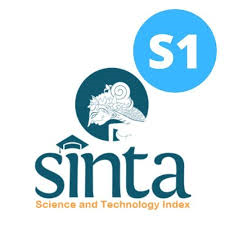LIGHT PREFERENCES IN TWO LANDSCAPE MANAGEMENTS AND ONTOGENIC LIGHT REQUIREMENTS OF TERRESTRIAL FERNS IN KEBUN RAYA BATURRADEN, CENTRAL JAVA
Abstract
Keywords
Full Text:
PDFReferences
ATHA, D. E., FORREST, T., NACZI, R. F. C., PACE, M. C., RUBIN, M., SCHULER, J. A., & NEE, M. 2016. The historic and extant spontaneous vascular flora of The New York Botanical Garden. Brittonia 68(3): 245–277.
ČEPELOVÁ, B. & MÜNZBERGOVÁ, Z. 2012. Factors determining the plant species diversity and species composition in a suburban landscape. Landscape and Urban Planning 106(4): 336–346.
DEPARTEMEN PEKERJAAN UMUM RI. 2005. Laporan Pembuatan Masterplan dan Studi Kawasan Kebun Raya Indonesia Baturraden - Jawa Tengah. Project Report (in Indonesian).
DE GROOT, G. A., DURING, H. J., ANSELL, S. W., SCHNEIDER, H., BREMER, P., WUBS, MAAS, J.W. & ERKENS, R. H. J. 2012. Diverse spore rains and limited local exchange shape fern genetic diversity in a recently created habitat colonized by long-distance dispersal. Ann. Bot.109(5): 965–978.
HOCK, Z., SZÖVÉNYI, P. & TÓTH, Z. 2006. Seasonal variation in the spore bank of ferns in grasslands on dolomite rock. Plant Ecol.187(2): 289–296.
HOLTTUM, R. E. 1938. The ecology of tropical Pteridophytes. In: VERDOORN, F., ALSTON, A. H. G., ANDERSSON-KOTTÖ, I., ATKINSON, L. R., BURGEDD, H., DU BUY, H. G., CHRISTENSEN, C., DOPP, W., DOCTERS VAN LEEUWEN, W. M., GAMS, H., GREGOR, M. J. F., HIRMER, M., HOLTTUM, R. E., KRÄUSEL, R.,
NUERBERGK, E. L., SCHOUTE, J. C., WALTON, J. WETZEL, K., WILLIAMS, S., WINKLER, H. & ZIMMERMANN, W. (Eds.). Manual of Pteridology. Springer. Dordrecht. pp. 420–450.
HOLTTUM, R. E. 1966. Flora of Malaya Volume II. Ferns of Malaya. 2nd. ed. Government Printing Office, Singapore.
KENZO, T., ICHIE, T., WATANABE, Y., YONEDA, R., NINOMIYA, I., & KOIKE, T. 2006. Changes in photosynthesis and leaf characteristics with tree height in five dipterocarp species in a tropical rain forest. Tree Physiol. 26(7): 865–873.
LUSK, C. H., FALSTER, D. S., JARA-VERGARA, C. K., JIMENEZ-CASTILLO, M., & SALDAÑA-MENDOZA, A. 2008. Ontogenetic variation in light requirements of juvenile rainforest evergreens. Funct. Ecol. 22(3): 454–459.
PEEL, M. C., FINLAYSON, B. L. & MCMAHON, T. A. 2007. Updated world map of the Köppen-Geiger climate classification. Hydrol. Earth Syst. Sci . 11(5): 1633–1644.
PPG, I. 2016. A community‐derived classification for extant lycophytes and ferns. J. Syst. Evol. 54(6): 563–603.
RSTUDIO TEAM. 2020. RStudio: Integrated Development for R. RStudio, PBC, Boston, MA. URL http://www.rstudio.com/.
SALDAÑA, A., GIANOLI, E., & LUSK, C. H. 2005. Ecophysiological responses to light availability in three Blechnum species (Pteridophyta, Blechnaceae) of different ecological Breadth. Oecologia 145(2): 252–257.
SALDAÑA, A., LUSK, C., GONZÁLES, W., & GIANOLI, E. 2007. Natural selection on ecophysiological traits of a fern species in a temperate rainforest. Evol Ecol. 21(5): 651–662.
SEDAYU, A. 2006. Distribution of terrestrial pteridophytes with respect to topographyand light exposure in tropical rain forest, In: KHOO, M. S., HONG-WA, C. & HARRISON, R. (Eds.). Proceedings of the Center for Tropical Forest Science-Arnold Arboretum International Field Biology Course 2006. CTFS-Arnold Arboretum Asia Program, University of Peradeniya & Forest Department Sri Lanka, Peradeniya. pp. 95–97.
TADESSE, G., ZAVALETA, E. & SHENNAN, C. 2014. Coffee landscapes as refugia for native woody biodiversity as forest loss continues in southwest Ethiopia, Biol. Conserv. 169: 384–391.
TICHÝ, L. 2016. Field test of canopy cover estimation by hemispherical photographs taken with a smartphone. J. Veg. Sci. 27(2): 427–435.
VOJÍK, M., SÁDLO, J., PETŘÍK, P., PYŠEK, P., MAN, M., & PERGL, J. 2020. Two faces of parks: sources of invasion and habitat for threatened native plants. Preslia 92(4): 353–373.
YAÑEZ, A., GUTIERREZ, D. G., & PONCE, M. M. 2020. Weedy ferns (Polypodiopsida) in Argentina: diversity, distribution and impact on human activities and ecosystems. An. Acad. Bras. Cienc. 92 (1): 1—36.
YANG, L., HUANG, Y., LIMA, L. V., SUN, Z., LIU, M., WANG, J., LIU, N., & REN, H. 2020. Rethinking the ecosystem functions of Dicranopteris, a widespread genus of ferns. Front. Plant Sci. 11 (article 581513): 1—10.

This work is licensed under a Creative Commons Attribution-NonCommercial-ShareAlike 4.0 International License.
Refbacks
- There are currently no refbacks.









